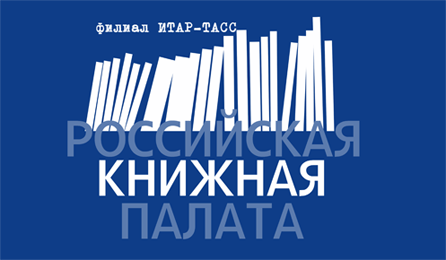Logunova I. V., Urodovskikh V. N. Dynamics of the peasant (private) farms development during the agrarian reform (1991–2001) in the Central Black-Earth Region // The Russian Peasant Studies. 2021. V.6. №4. P. 65-86.
DOI: 10.22394/2500-1809-2021-6-4-65-86
Annotation
The article presents the results of the structural-dynamic analysis of the development of peasant (private) farms under the agricultural reform of 1991-2001 in the Central Black-Earth Region. The research is based on both published and unpublished sources—materials from the archives of the State Statistics Committee of the Russian Federation, data of the territorial statistical bodies, from statistical collections and regulatory legal acts. Statistical data is presented in tables and graphs. The study of the dynamics of the farms’ development in the period under study allowed the authors to identify general features of this process in the Central Black-Earth Region and its peculiarities in different areas of this region. The authors analyzed the number of farms, their average size, and the size of their land, and conclude that during the agrarian reform of 1991-2001, farmers of the Central Black-Earth Region were forced to fight for survival. Therefore, farms of extremely small size, in a poor financial situation and created by come-and-go people were eliminated; they made up a third of all farms. By 2001, the number of farmers had stabilized, there was a 1.5–2-fold increase in the area of farmers’ land and in the size of the average farm. Farmers who managed to pass the ‘test of strength’ found new opportunities for development.
Keywords
Agrarian reform, farmers, peasant (farmer) economy, Central Black-Earth Region, number of farms, average size of farm, land area of farms.
About the authors
Logunova Inna V., PhD (History), Associate Professor, Department of Management and General Humanities, Lipetsk Branch of the Financial University under the Government of the Russian Federation; Internatsionalnaya St. 12B, 398000 Lipetsk.
E-mail: This email address is being protected from spambots. You need JavaScript enabled to view it.
Urodovskikh Viktor N., PhD (Engineering), Associate Professor, Department of Accounting and Information Technologies in Business, Lipetsk Branch of the Financial University under the Government of the Russian Federation; Internatsionalnaya St., 12B, 398000 Lipetsk.
E-mail: This email address is being protected from spambots. You need JavaScript enabled to view it.
Makarov N.P. At the great crossroads. The comparative analysis of the evolution of agriculture in China, the United States of North America, the USSR, and Western Europe (Article of N.P. Makarov) // The Russian Peasant Studies. 2019. V.4. №1. P. 6-21.
DOI: 10.22394/2500-1809-2019-4-1-6-21
Abstract
This article published in the mid-1920s in the Peasant International was written by an outstanding Russian agrarian scientist and a prominent representative of the organization-production school Nikolai Pavlovich Makarov (1887–1980). It is quite strange that this article was not listed in the bibliographies of Makarov’s works although it is absolutely important for the understanding of the evolution of world agriculture in the 20th century. Moreover, the reader will see that in the second half of the 1920s the ideas of this article were developed in the works of other representatives of the organization-production school — A.V. Chayanov, G.S. Studensky, A.A. Rybnikov. As the title and the foreword of the article show, the author seeks to provide an analytical description of the main directions of the world agrarian evolution of the 1920s and its possible alternatives on the example of four main macro-regions of world agriculture: the USA, China, Western Europe and Russia. First the author focuses on the two so-called “poles” of agrarian development — the United States and China — and argues that “old” labor-intensive agrarian China and the “young” capital-intensive agrarian United States are the exact opposites of each other. It is between these poles that the paths of the agricultural evolution of most countries of the world, including Europe and Russia, are located. Makarov concludes with a preliminary diagnosis of the approaching “great agrarian crossroads” of world agriculture. The publication with comments was prepared by A.M. Nikulin.
Keywords
agriculture, USA, China, Western Europe, Russia, agrarian evolution, peasants, farmers
About the authors
Makarov Nikolai Pavlovich
Editor: Nikulin Alexander M., PhD (Economics), Head of the Center for Agrarian Studies, Russian Presidential Academy of National Economy and Public Administration; 119571, Moscow, Prosp. Vernadskogo, 82.
E-mail: This email address is being protected from spambots. You need JavaScript enabled to view it.
Chayanov A.V. Letter from A.V. Chayanov to V.M. Molotov on the current state of agriculture in the USSR compared with its pre-war state and the situation in agriculture of capitalist countries (October 6, 1927) // The Russian Peasant Studies. 2018. V.3. №3. P. 6-18.
DOI: 10.22394/2500-1809-2018-3-3-6-18
Annotation
Alexander Chayanov wrote this analytical note to Vyacheslav Molotov in early October 1927 to discuss plans for the agricultural development of the first five-year plan in the USSR. Chayanov begins with a brief review of the history of world agriculture in the early twentieth century. He identifies two poles in this evolution: western (American — typically North America and partly South America, South Africa, and Australia) and eastern (Indian-Chinese, typically agrarian overpopulated countries). The American type of agricultural development is based on farms that use machinery and wage labor and are controlled by the vertical system of financial capitalism. The Indian-Chinese type of agricultural development is characterized by agrarian overpopulation of the peasantry under dominant pre-capitalist relations, exceptional labor intensity, and widespread bondage rent and credit. The rest of the world’s regions can be placed between these two poles. In the late nineteenth and early twentieth centuries, Russia is a paradoxical, complex mixture of these two types. Chayanov believed that in the agrarian science of pre-revolutionary and prewar Russia, these polarized agrarian worlds were reflected in the agrarian-economic disputes of the so-called “southerners” and “northerners” about the strategy of agricultural development. “Southerners” insisted on turning Russia into a “hundredpercent America” by the forced development of farmers’ agriculture. The “northerners” suggested supporting the regional strata of the middle peasantry and its own vertical cooperation to prevent the seizure of the village by trade and financial capital. Chayanov considered himself a “northerner”. He argued that the post-war, post-revolutionary village has changed significantly. First, the younger generation of peasants who had experienced the world war and Russian Revolution set the tone. Second, the Soviet agronomic science and cooperation of the 1920s contributed to the real progress of peasant farms. Soviet Russia has a unique chance to find a fundamentally new path of rural development, thus avoiding the Scylla of Americanfarmers’ dependence on financial capital and the Charybdis of the Indian-Chinese stagnation of peasant overpopulation. Instead of American vertical agrarian integration through the dominance of financial capital over farmers, Soviet vertical integration was to promote the development of diverse forms of peasant cooperation with the support of the socialist state. In the final part of the note, Chayanov considers the ratio of industry and agriculture in the first five-year plan and predicts a radical socialtechnological change under agricultural industrialization. The Soviet leadership ignored the ideas of this note: Stalin rejected Chayanov’s democratic type of vertical cooperation of the peasantry and preferred a horizontal type of cooperation in the form of collectivization. The publication with comments was prepared by A.M. Nikulin.
Keywords
Agrarian policy, peasants, farmers, agricultural cooperation, agrarian capitalism, socialist agriculture, ways of agricultural development.
About the authors
Chayanov Alexander V.
Editor: Nikulin Alexander M., PhD (Economics), Head of the Center for Agrarian Studies, Russian Presidential Academy of National Economy and Public Administration; 119571, Moscow, Prosp. Vernadskogo, 82.
E-mail: This email address is being protected from spambots. You need JavaScript enabled to view it.
Translator: Trotsuk Irina V., DSc (Sociology), Senior Researcher, Center for Agrarian Studies, Russian Presidential Academy of National Economy and Public Administration; Professor, Sociology Chair, RUDN University. Prosp. Vernadskogo, 82, Moscow, Russian Federation, 119571.
E-mail: This email address is being protected from spambots. You need JavaScript enabled to view it.
Nefedova T.G. Contemporary peasant economy in the rural-urban environment // The Russian Peasant Studies. 2018. V.3. №1. P. 117-140.
DOI: 10.22394/2500-1809-2018-3-1-117-140
Annotation
The article considers features of contemporary Russian households under the concentration of large enterprises and polarization of the countryside. The author compares farms at the beginning and in the middle of the twentieth century to show that many factors determining the households’ life a century ago are still active. The article describes features of today’s small households and farmers and their main types; identifies their variety in the Non-Black Earth, southern and eastern regions, in the suburbs and on the periphery. Among the factors affecting activities of population in households, the author focuses on the degree of rural depopulation, rural ethnic composition, and interaction between households and large agricultural enterprises. Thus, inefficient enterprises were not replaced by small farms due to the gradual decrease of agricultural activities of rural population. There is a significant share of the unused land with an exception of some southern regions, which proves that land is not the key factor in enhancing agricultural activities of small farms. However, the agricultural land use of gardeners is very intensive except for the suburbs of Moscow and Saint Petersburg. The greatest activity is typical for farms with high marketability, including “shadow farms”, and for subsistence households following peasant traditions and partially self-sufficient.
Keywords
Peasant farm, agricultural enterprises, farmers, household plots, gardeners, land use, livestock.
About the authors
Nefedova Tatyana G., DSc (Geography), Chief Researcher, Institute of Geography, Russian Academy of Sciences; 119017, Moscow, Staromonetny Per., 29.
E-mail: This email address is being protected from spambots. You need JavaScript enabled to view it.





















